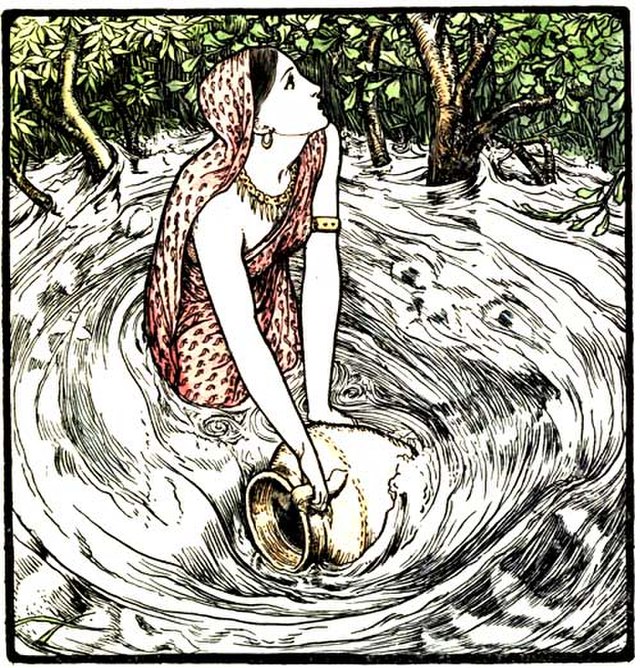Last year, as I was reading the Torah portion Vayakel, toward the end of the book of Exodus, I realized that it is a feminist portion. The commandment to kindle no fire on Shabbat meant that women had a cessation of labor on Shabbat and didn’t have to cook. What a wonderful gift! But it wasn’t until I came across a bit of commentary on the subject of property that a truly amazing realization came to me: that the wilderness experience was an egalitarian one for women.
The puzzle came together piece by piece. The Talmud (Ketubot 47b) states that “a husband is obligated to provide his wife with sustenance, redemption from captivity, and burial. The Sages taught in a Baraita (a teaching outside the Mishna or Oral Law): “The Rabbis instituted that a husband must provide his wife with her sustenance in exchange for his rights to her earnings.” In other words, a husband must support a wife. As we know, manna descended each day, except on Shabbat, to everyone equally, during the forty years of the wilderness experience. Husbands were not supporting wives in the wilderness. Wives had their own food. Moreover, women in the wilderness had their own property.
Exodus (3:22) tells us that each Israelite woman in Egypt was to “borrow from her neighbor and the lodger in her house objects of silver and gold, and clothing.” Also, God told Moses to “Tell the people to borrow, each man from his neighbor and each woman from hers, objects of silver and gold” (11:2). Thus women possessed their own gold, silver, and garments after their departure from Egypt, and they donated these objects for the building of the Tabernacle, the portable place of worship in the wilderness. In fact, the Torah relates that women were the leaders in these donations: “the men came along with the women, all who were willing of heart brought brooches, earrings, rings, and pendants: gold objects of all kinds” (35:22). The famous 13th Century Spanish Torah commentator Nachmanides agreed, saying, “the women came first and the men followed.”
The women also donated one other important item for the Tabernacle. Exodus 38:8 states that the women donated their copper mirrors for the laver and its stand, which was positioned just outside the Tent of Meeting that housed the great Menorah, the Table for Showbread, the Incense Altar, and the Holy Ark, containing the Tablets of the Ten Commandments. The laver was a large copper bowl which held water for washing, and was used by the priests.
We know that in the ancient world, obtaining water was a woman’s task. Abraham’s servant Eliezer went to a well to find a wife for Isaac, and that Rebecca drew water for him and for his camels. Jacob met Rachel at a well, where she came to water her father Laban’s flock of sheep; and Moses met Zipporah, his future wife, and her sisters at a well in Midian, where they were watering their father’s sheep. In the book of Samuel, Saul encountered young women on their way to draw water (9:11). This tradition has persisted even now, in places where running water in homes does not exist.
While working at an internship in the US State Department one summer, I heard a story about this. Several decades ago, aid workers had gone to a location in Africa where plumbing was primitive or non-existent. The aid workers set about bringing indoor plumbing and running water to homes in a rural village. Rather than being thrilled with this new system, the women were devastated. Going to the well was their social time with other women. It was their chance to talk to each other, exchange information, and be with their friends. The convenience of running water took away their social life.
This social life of women is just what the Torah describes. The Laver and its stand were made, “from the mirrors of the women who congregated at the entrance of the tent of meeting (38:8).” We now have a total picture of true equality in the wilderness. Women received their own food from Heaven. They were not only responsible for donating much of the material used to build the Tabernacle, and incidentally, also spun the colored yarns and goat hair with which the fabrics of the Tabernacle were made; they were employed in drawing water for the priests each day, meeting at the laver outside the centrally located Tent of Meeting, not only to “visit” their former mirrors but also to be with other women. They were as independent as the society and mores of their time would allow, having property, occupation, and status in the society. This egalitarian experience in the wilderness was hiding in the Torah in plain sight. It just took a bit of vision, and putting together the pieces of the puzzle, to see it.
